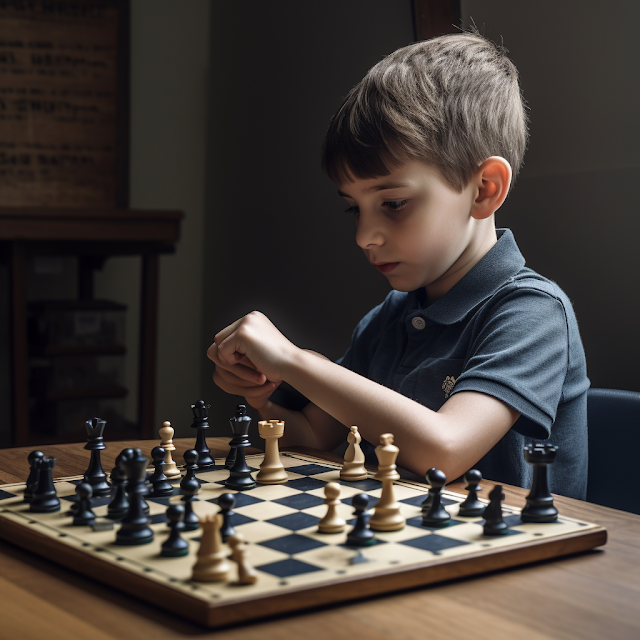How to Memorize a Chess Board: Effective Strategies for "Chess for Kids" and Beyond Chess is a game of strategy, intuition, and c...
How to Memorize a Chess Board: Effective Strategies for "Chess for Kids" and Beyond
Chess is a game of strategy, intuition, and calculation. But underlying all these elements is a foundational skill: board visualization. Especially when we consider "chess for kids", fostering this skill early on can be an invaluable asset. But why is it necessary, and how does one go about achieving it? In this blog post, we'll delve deep into the effective strategies to memorize a chessboard, ensuring that chess for kids becomes a delightful learning journey.
1. The Importance of Memorizing a Chessboard
Why is it Crucial, Especially in 'Chess for Kids'?
Enhances Visualization: The ability to visualize the board helps players, especially kids, to foresee moves ahead, strategize, and anticipate the opponent's moves.
Boosts Confidence: For children, knowing the board inside out can significantly increase their confidence in gameplay.
Foundational for Advanced Play: Advanced techniques like blindfold chess can only be executed if the player has a solid memory of the board.
2. Effective Strategies for Memorizing the Chessboard
Chunking the Board
Breaking It Down: Instead of overwhelming beginners, especially kids, with the entire 8x8 grid, break the board into smaller sections. Memorizing chunks can be more manageable and less daunting.
Focus on Quadrants: Divide the board into four quadrants and tackle one at a time. This method, particularly effective in "chess for kids" training, makes the task feel more achievable.
Board Visualization
Mind's Eye View: Encourage the child to close their eyes and visualize the board. Begin with the entire board, then zoom into specific squares, ranks, and files.
Chessboard Meditation: Dedicate a few minutes daily just for board visualization. This quiet reflection can cement the board's image in the mind, making "chess for kids" a meditative experience too.
Narrative Creation
Weave Stories: Use the chess pieces as characters and the board as a setting to weave engaging stories. For instance, "On c2, a brave knight embarked on a journey to rescue a queen trapped on f7." Such narratives make "chess for kids" a fun and memorable adventure.
Coordinate Drills
Interactive Learning: Turn the memorization process into a game. Call out a coordinate, and have the child point to the square. For kids, turning this into a competitive game can make the learning process fun.
Online Platforms: Use platforms designed specifically for "chess for kids" that offer coordinate drills. These platforms turn learning into an engaging experience.
3. Further Enhancements
Blindfold Training
The Ultimate Test: Once comfortable with the board, kids can be introduced to blindfold chess. This technique not only tests their memory but also hones their visualization skills.
Endgame Visualization
Simplify to Amplify: Begin with basic endgames. Visualizing simpler board scenarios can gradually build up a child's confidence to tackle more complex positions.
Regular Practice
Consistency is Key: The saying, "practice makes perfect," holds true, especially in "chess for kids". A regular routine ensures that the board's layout becomes second nature to the young player.
4. The Need for Memorizing a Chessboard in 'Chess for Kids'
Building a Strong Foundation
As we gear towards making "chess for kids" a widespread movement, it's vital to understand the importance of a strong foundation. Memorizing the chessboard isn't just about knowing where the squares are. It's about:
Strategic Development: A memorized board leads to better gameplay strategies.
Cognitive Enhancement: The process of memorization can enhance other cognitive skills in children, such as spatial awareness and problem-solving.
Boosting Memory: Regular practice can significantly improve a child's memory, aiding not just in chess but also in academic endeavors.











No comments